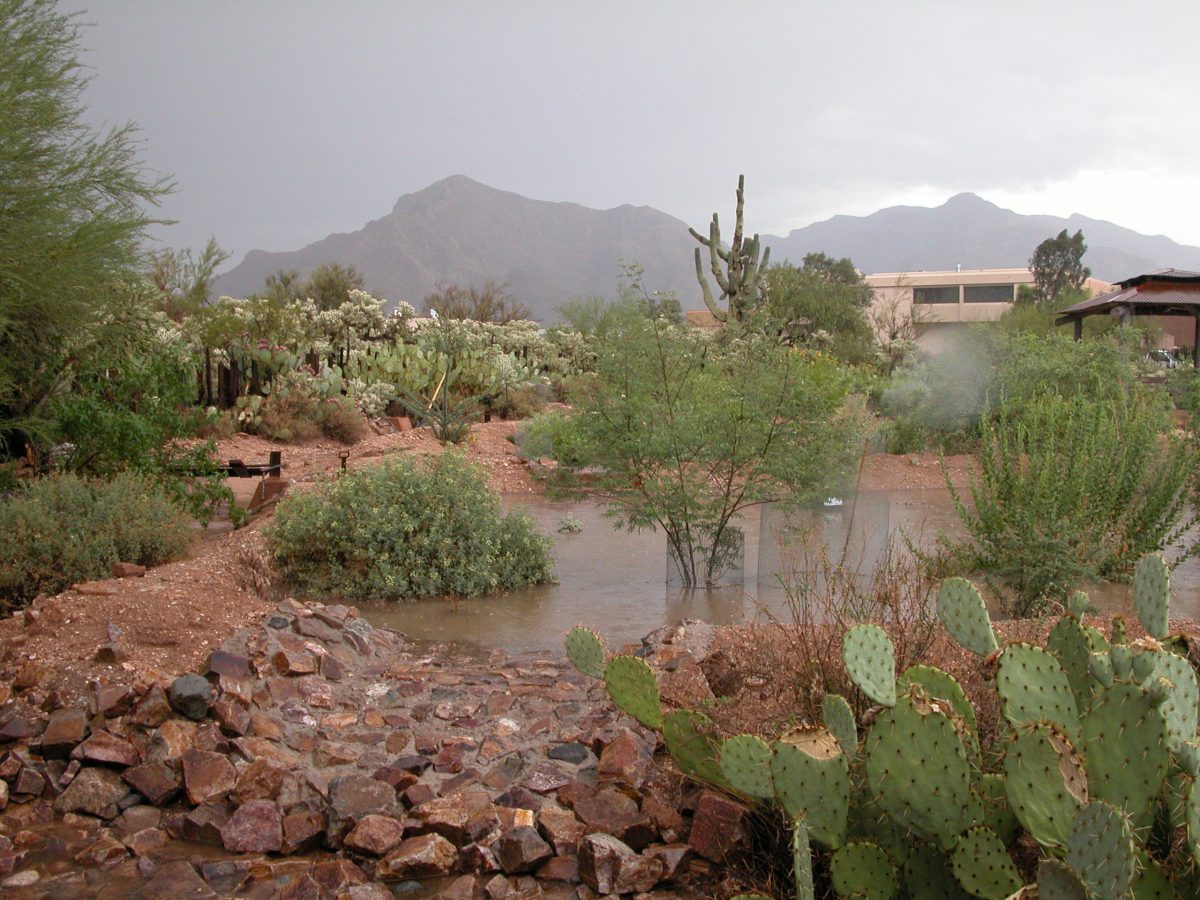
Tohono Chul (aka Tohono Chul Park) is a botanical garden, nature preserve and cultural museum located in Casas Adobes, a suburb of Tucson, Arizona. The words “tohono chul” translate as “desert corner” and are borrowed from the language of the Tohono O’odham, the indigenous people of southern Arizona. The mission of Tohono Chul is to connect people with the wonders of nature, art and culture in the Sonoran Desert region and inspiring wise stewardship of the natural world.[citation needed]
The 49-acre (19.8 ha) site itself offers a setting for Tohono Chul’s regional focus. Views of the Santa Catalina Mountains form a backdrop for the natural desert habitat and its location within existing migratory tracks provides a temporary home for many species of wild, native fauna. Thirty-eight species of birds make their permanent home here while another 57 migrant species visit seasonally, and a variety of reptiles and mammals, from Gila monsters to bobcats, may be spotted on the grounds.
Within these surroundings, Tohono Chul has developed thematic displays using its botanical collections which consist primarily of plants native to the Sonoran or Chihuahuan Deserts. They include more than 150 species of shrubs and trees; 300 species of cacti and succulents; and 50 species of wildflowers. In addition, Tohono Chul has the largest private collection of native Night-blooming Cereus – Peniocereus greggii – and each summer hosts “Bloom Night”, the one night it is predicted the greatest number of cereus flowers will open.
Outdoor exhibits include:
- EthnobotanicalGarden — displays indigenous plants cultivated by Southwestern native peoples for food, medicine and other necessities of life, as well as those crops introduced by European settlers
- RiparianHabitat — replicates the stream-side natural vegetation of Arizona’s threatened riparian communities
- GeologyWall — this display illustrates the geologic history of the nearby Santa Catalina Mountains
- SaguaroDiscovery Trail — an exploration of the saguaro through its cultural connections to the Tohono O’odham and its botanical connections to the natural history of the Sonoran Desert
- Sin Agua Garden — a former parking lot converted into a rainwater harvestingdemonstration
- Desert Living Courtyard — another parking lot is now a series of garden vignettes in a variety of design aesthetics all promoting Xeriscapeand intended to inspire homeowners to use native and arid-adapted plants in backyard landscapes[citation needed]
- Sonoran Seasons Garden — the five seasons of the Arizona Upland subdivision of the Sonoran Desert
- Desert palmOasis — native fan palms shelter in this recreation an isolated mountain canyon found along the east coast of the Gulf of California
Tohono Chul’s changing indoor arts and cultural exhibitions are community oriented, and feature community groups and artists of all ages. Three exhibit spaces allow for different types of exhibitions, from large group shows lasting several months to smaller, one-man exhibits on display for six to eight weeks. The focus may be on traditional or contemporary art, and include paintings, sculpture and folk arts, but exhibitions also address environmental concerns affecting the Sonoran Desert and the Southwest. In addition, a selection of basketry, fiber arts, sculptural works and paintings forms the core of a Permanent Collection of Native American artwork.
Tohono Chul is currently closed but word is that it will be open by June 30th.
Website: https://tohonochul.org/


 The data relating to real estate listings on this website comes in part from the Internet Data Exchange (IDX) program of Multiple Listing Service of Southern Arizona. IDX information is provided exclusively for consumers' personal, non-commercial use and may not be used for any purpose other than to identify prospective properties consumers may be interested in purchasing. Listings provided by brokerages other than SBRanchRealty are identified with the MLSSAZ IDX Logo. All Information Is Deemed Reliable But Is Not Guaranteed Accurate. Listing information Copyright 2020 MLS of Southern Arizona. All Rights Reserved.
The data relating to real estate listings on this website comes in part from the Internet Data Exchange (IDX) program of Multiple Listing Service of Southern Arizona. IDX information is provided exclusively for consumers' personal, non-commercial use and may not be used for any purpose other than to identify prospective properties consumers may be interested in purchasing. Listings provided by brokerages other than SBRanchRealty are identified with the MLSSAZ IDX Logo. All Information Is Deemed Reliable But Is Not Guaranteed Accurate. Listing information Copyright 2020 MLS of Southern Arizona. All Rights Reserved.